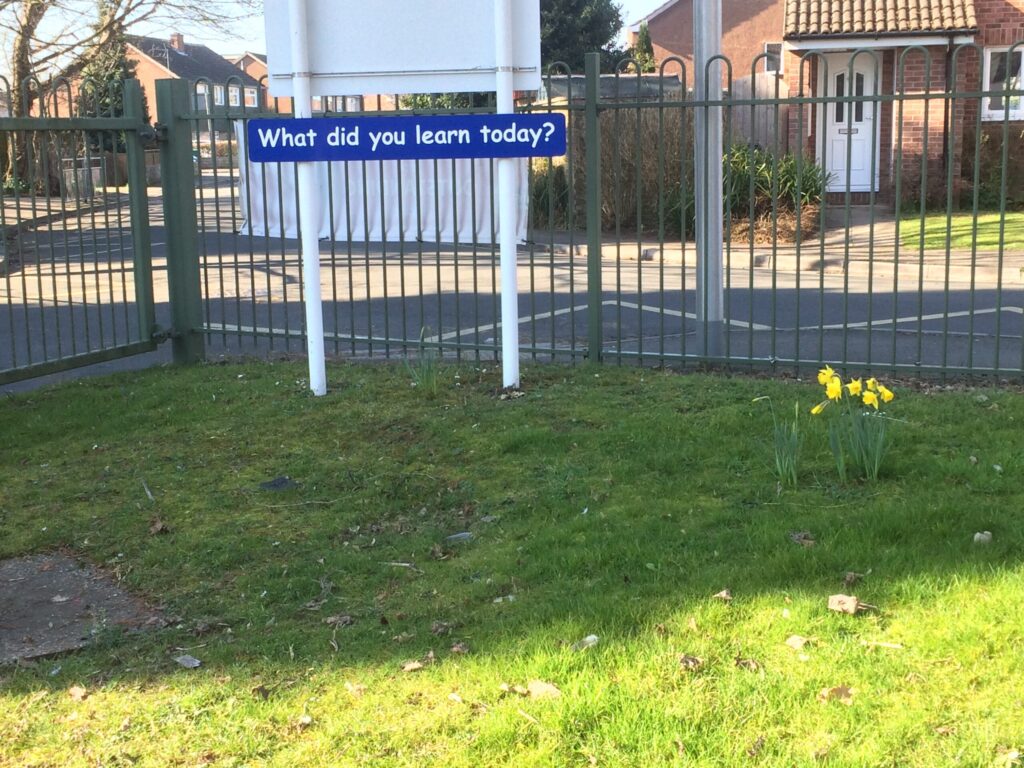October 17, 2014
Last month I visited a primary school which stole my heart within the first five minutes. Left alone in the head teacher’s office while he went off to make some coffee, everywhere I looked brought a smile to my face. A handful of books stood on his desk within an arm’s reach of his seat and I was delighted to see Learning without Limits (Hart et al, Oxford University Press, 2004) and the Index for Inclusion (Booth & Aiscow, CSIE, 2011) among them. The wall behind me all but spoke to me, covered as it was with a large-scale concept map which turned out to be the school development plan. And outside the window, the footpath out of the school led to a small gate with an impressive sign next to it. From the outside looking in, this must have been the sign with the school’s name and maybe that of the head teacher and the caretaker. From the inside looking out, however, this was a different sign, posing a simple question to everyone as they leave: “What did you learn today?”
I learnt quite a lot that day, as it happens. More than anything, this visit confirmed to me the significant impact that a leader and their vision can have on a school. The rhetoric of wanting to do what is best for all children is not new. How this school goes about it, however, is quite unique in a number of ways and I hope our new resource will reflect many of them. The school has a strong track record on pastoral support and we spoke quite a lot about the quality of personal interactions and the little things that make a difference (things like how you greet staff or pupils when you walk past them or who you choose to sit next to at a staff do).

Walking around the school and casually chatting about how teaching & learning is organised here, the head teacher told me that they employ more teachers than learning support assistants to work with children identified as having special educational needs, on the grounds that they are their main educators. He also said that the school no longer employs school meal supervisory assistants (aka “dinner ladies”) but that ordinary members of staff, mostly learning support assistants, are on duty at lunchtimes. I commented that both these measures are more expensive than the norm and asked how the school can afford them. He said the additional funding comes from pupil premium and that the practical benefits far outweigh the expense.
The school employs a learning mentor who helps children with behavioural issues and to celebrate diversity. The school also employs an Inclusion Leader with a brief to reduce barriers to learning. The head teacher chose his words carefully and left me in no doubt that when children are not learning as expected, the issues are understood to lie with the organisation, not the individual. I may not have caught this word for word, but I think he said “If you want to engage vulnerable learners, you’ve got to have a vibrant curriculum”.
Your email will not be displayed on comments



